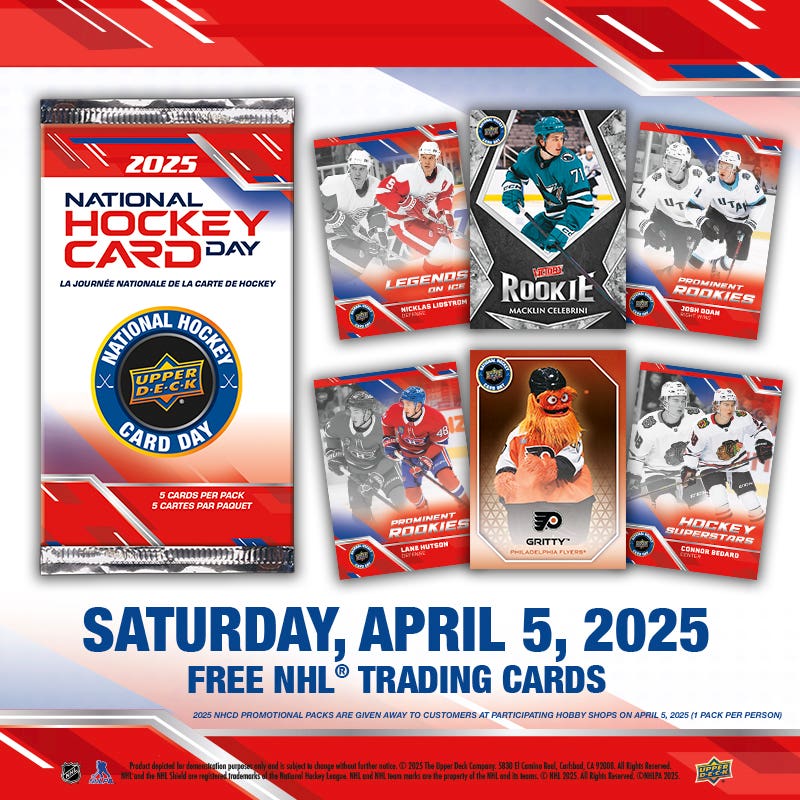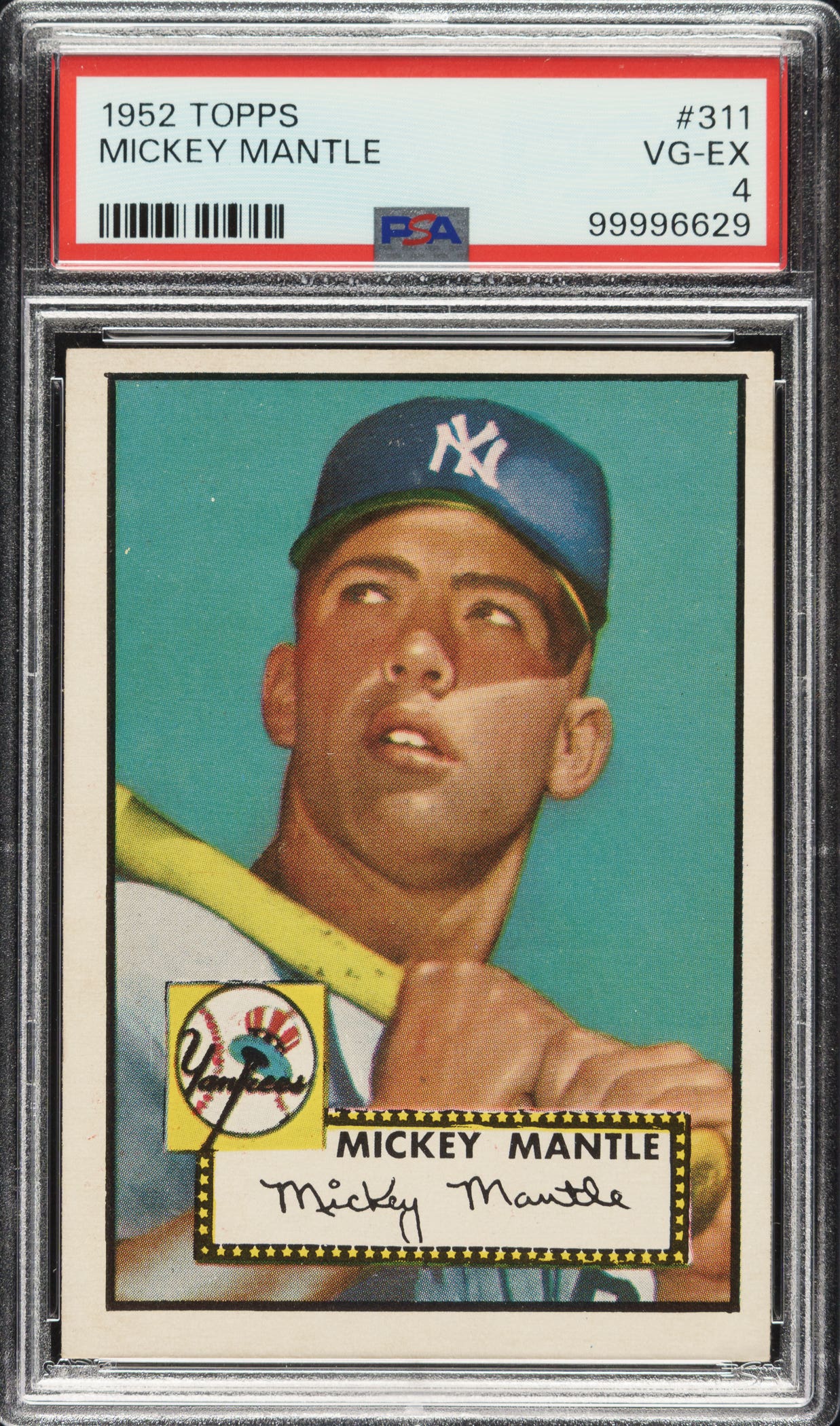
Tobacco Cards
Underrated Tobacco Cards: A Review of the T218s
By George Vrechek
Have you been attracted by the history, graphics and musty old smell of baseball tobacco insert cards, but not had the extra cash or determination to start collecting them?
This would not be surprising since baseball tobacco insert cards, which used to be available for a dime a dozen (or maybe several dimes), now will cost you many dimes. It is hard to imagine coming close to completing the famous T206 set, and if you were interested in acquiring T206 back variations, you would be very busy and have even fewer dimes left.
The T218 set
However, there is good news for those of you interested in vintage cardboard with that tobacco smell. And these are at a fraction of the price of other baseball cards. No, this isn’t about collecting tobacco cards of actresses, birds, flags or butterflies.
This is about a set of sports champions – the T218 Champion Athletes. T218s include champions of the day, the day being the period from 1910-12. The set is heavy on boxers and track stars, but also includes swimmers, golfers, pool players, bowlers, aviators, a roller skater and a few baseball players (sort of, more on that later). Many of the T218s can be obtained today in decent shape for a few dollars each; graded cards, especially boxers and golfers, can fetch considerably more.
With available and affordable cards in the market, many variations, great images and interesting biographies, the 153-card T218 set has everything you would ever want in vintage card collecting – unless, of course, you want a bunch of baseball players. Since many of us are rather baseball card-oriented, the T218 set has had a low profile with inconsistent recognition in catalogs and sketchy checklist information.
However, there is a core of T218 collectors in the hobby, and they have slowly been digging into the nuances of this 100-year-old set. Even Jefferson Burdick (the Father of Card Collecting) got into collecting T218s. Collector Erik Powell found some T218s two years ago with Burdick’s name stamped on the back. (Aug 12, 2011, issue of SCD).
Researching and collecting T218s can be rather addictive. The more I searched, the more questions surfaced. Answers are available for some of the mysteries about this set, but many details remain a matter of conjecture.
The American Tobacco Co.
According to Richard Tennant’s 1950 book, The American Cigarette Industry, James B. Duke’s American Tobacco Co. (ATC) was cruising along in the early 1900s, doing what businesses did in those days – eliminating competition, monopolizing the market, cutting labor costs, ignoring health concerns and raising profits. ATC (using the names of various entities) controlled a significant portion of the plug tobacco and the rapidly expanding cigarette market. While ATC spent money to advertise products and expand its customer base, it no longer felt the need to do much with insert cards. (Cards inserted as stiffeners in small cigarette packs had been quite popular when independent manufacturers competed for customers in the 1880s.)
Meeting the Turkish tobacco competition with inserts
The market changed in 1906 when ATC started to experience competition from independent New York City importers of Turkish, Greek and Egyptian tobaccos. The Turkish-style tobacco was sold for 20 cents for 10 cigarettes. Competitors’ brands had a distinctly different taste that people liked. ATC responded to this challenge by blending a cheaper Turkish tobacco with Virginia tobacco and promoting the desirability of “blended” tobacco with names like Hassan and Mecca, complete with Mid-Eastern graphics. ATC sold the Hassan and Mecca cigarettes at 5 cents for 10 cigarettes, or one-quarter of the price of the Turkish-style competitors. ATC also went “all-out” starting in 1907, re-introducing tobacco insert cards to further meet the competition and take over their profitable share of the market.
Through their various company identities, ATC released a plethora of cards over the next five years, which included the well-known baseball sets T201, T202, T205, T206 and T207, but also a myriad of sets featuring actresses, animals, arctic scenes, automobiles, bridge-game hands, etc. The vast majority of these other sets were non-sports issues, but there were a few which included athletes. Several featured only boxers. The T221 set consisted of 100 women swimmers, and T230 World’s Champion Athletes was comprised of 50 track and swimming athletes, including surfer Duke Kahanamoku.
The Champion Athletes and Prizefighters set was designated by Jefferson Burdick as T218. In general, the set consists of three series of 51 cards featuring athletes other than baseball players and was issued between 1910-12. However, the details behind the set are much more interesting. We have errors, variations, a withdrawn card, an added card, three different brands, two different factories, different titles, dead guys, Olympic baseball players, a referee, a walker, plenty of interesting biographical information and a master set thought to total 636 cards.
Athletes
ATC had plenty of cards of baseball players filtering out of their packs into the hands of smokers and eventually finding homes with youngsters. They issued the T227 Series of Champions with four ball players, but only 21 other athletes under the “Miners Extra” and “Honest Long Cut” brands. Rather than issue some more sets featuring bridge game hands or baseball players, ATC must have figured there was a market with their Hassan and Mecca customers for some other athletes. Prize fighting was quite popular during this era, and the 1908 Olympics held in London boosted the popularity of track and swimming athletes. It was logical to pair up 23 prize fighters with 20 track and eight swimming athletes in the first series of T218s.
Fame is fleeting, and while many of the athletes featured were world champions, their names have faded into the murky past. Fighters James Jeffries and Abe Attell might be the only recognizable names for many of us in the first printing. The recognition meter jumped up considerably during the initial issue with the appearance of a card of prize fighter Jack Johnson (side view), who was near the height of his career.
Another Jack Johnson card (front view) appeared, along with another James Jeffries card and 25 other fighters, 20 track athletes, two swimmers and one roller skater in the second series of cards issued under the Hassan, Mecca and Tolstoi brands. The ATC companies decided to add to the variety with their third series issued by only Mecca, featuring 11 track athletes, 10 boxers, one boxing referee, 15 pool players, six golfers, four bowlers and four aviators. “Names” among this group included golfer Alex Smith and pool player Willie Hoppe.
Getting into the details
The T206 set has about 525 cards and was printed on 16 different brand backs resulting in an impossible number of variations to collect. The T218 set isn’t easy either, but it has a more manageable number of variations. I was fortunate to obtain information about the printing and variations of T218s from collectors David Weisner, Erik Greenwood and Steve Rittenberg.
Series 1: 50 cards and more?
Some of the T218 card backs are found with the description: “Series 2 #51 to 100.” This would lead to the conclusion that there were 50 cards in a Series 1 and the rest of set would be found in a Series 3, even though the other series are not identified on the cards. This conclusion is apparently quite wrong. Weisner’s examination of the card back variations led him to a different scenario.
Weisner identified cards with certain back characteristics as being in Series 1. It looks like the first series was first printed on Mecca brand backs with references either to Factory #30 or #649. These cards included track athletes, swimmers or boxers.
The Mecca brand cards have a title on the back: “Champion Athlete and Prize Fighter Series.” The same cards (almost) were then printed on Hassan brand backs, deleting the title “Champion Athlete and Prize Fighter Series,” apparently to make room for additional Hassan sales language. Fifty-one cards (almost) were printed in this way. The exceptions are interesting.
Pulling a swimmer from the river and his card from the set
H.J. Handy was a distance swimmer with a “most peculiar stroke,” according to the back of his card. I learned that he had to be pulled from a two-mile race in the Chicago River in 1908 due to cramps caused by the cold water – or perhaps the polluted water.
Despite his bravery for swimming in the Chicago River, Handy was apparently also pulled from the T218 set to make room for a Jack Johnson card. Handy appears only on the (early?) Mecca brand cards. Johnson (side view) appears in both the Mecca and Hassan backs and has back characteristics which would fit the patterns found in both Series 1 and Series 2.
Errors and corrections
Two cards in Series 1 had errors in spelling the athletes’ names. Swimmer C.D. Trubenbach has his name misspelled as Trudenbach in the early Mecca issue. The correct spelling (Trubenbach) appears in corrected Mecca cards and in all the Hassan cards. Track athlete S.P. Gillis adds to the confusion. My own explanation for what happened is that Gillis’ name was spelled correctly on the back of his card but spelled as Gilles on the front of his Mecca cards. They fixed the error by making the spelling on the back wrong as well, changing it to Gilles to agree with the front. The new card of Gilles (consistently spelled wrong) then appears in both the Mecca and Hassan brands.
If you search for poor old S.P., you find his name also spelled as Gillies. He also had the misfortune of accidentally fatally hitting a youngster in the head with a practice hammer throw in 1904.
Series 2 backs
The second series was issued by Mecca, Hassan and Tolstoi with a “Series 2, 51 to 100” notation on the cards. The Mecca cards still had room for a title, which remained “Champion Athlete and Prize Fighter Series.” Hassan brands had no such room for a title. Factory 30 also cranked out Series 2 Mecca cards with no Series 2 notation. They used the same format as in Series 1. Tolstoi cards were only issued by Factory 30.
Series 2 has a front-view Johnson card and repeats the side view card as well.
Weisner offered, “I think the key to the set is understanding the Jack Johnson cards. They seem to be very plentiful, but I haven’t seen all of the backs that I would expect. Maybe they don’t really exist.”
Series 3 backs
Series 3 has yet another collection of variations. All cards were issued only under the Mecca brand by both Factories 30 and 649. The titles on cards related to the type of athletes featured, mentioning either fighters, golfers, bowlers, pool and billiard players, or (just) athletes. However, the 11 track and field guys in the series all wound up with two different separate titles: “Series of Champion Athletes” and “Series of Champion Athletes & Prize Fighters.”
This is all too much to keep track of without a detailed matrix. Unfortunately, a detailed matrix would give many readers a headache and take up too many pages of valuable space. Therefore, I am including an abbreviated version of the matrix showing a master set of 636 cards.
Weisner has seen images of all but 10 of the 636, and I think it is logical to assume the remaining 10 cards exist. However, I wouldn’t bet the farm on the master set having exactly 636 cards.
Scarcities
Based on my limited research, it appears that Series 3 is tougher than Series 1, and Series 1 is tougher than Series 2. An additional factor is that the golfers, aviators and other oddballs in Series 3 are desirable since athletes from these sports don’t appear in many other sets. Boxers in the set have been collected by boxing-only fans, leaving the track stars waiting around for their fans to appear someday.
Factory 30 backs seem to be scarcer than Factory 649 backs. Series 2 Tolstoi backs are much scarcer than the other brands. Hassan backs in Series 2 without the Series 2 notation are scarcer than those with the notation. For the 11 track athlete variations in Series 3, the backs with “Series of Champion Athletes & Prize Fighters” seem harder to find than those with “Series of Champion Athletes.” Jack Johnson side-view fronts are plentiful. (I paid $1 for mine.) The Series 1 Mecca back with Gillis is not easy.
Other T218 items of interest: Olympic baseball players
Weisner observed, “In the 1912 Olympics, there were two exhibition games played between the Americans and the host Swedes. The American professionals didn’t want to go because it was mid-season for them, and these were just exhibition games, so the American team was made up from the track athletes – many of whom are in this set. Abel Kiviat was the shortstop, for example.”
Frank Irons played left field. Platt Adams pitched. All were in the T218 set. Jim Thorpe (not in the T218 set) played in one of the exhibition games; four Americans played for Sweden.
Walking for money
Professional walker Edward Weston would seem to be a stretch getting into this set with the champions of the day. But he was known as “The Father of Modern Pedestrianism,” and he walked all over the place for money until he finally got nailed by a cab in New York in 1927.
Times to-day have changed
Many of the records mentioned on the T218 cards are for events that are no longer featured, such as 20, 300 and 500-yard races. Swimmer J.A. Ruddy “established new records for swimming with feet and knees tied from 20 to 40 yards.” Maybe that is how the butterfly was invented. Boxers had many “no decisions” and “draws” on their records.
Records in 1910 were generally 20-40 percent slower or shorter than “to-day” (as the T218 biographers wrote the word “today” back then). For example, the record for the Marathon then was 2:40. Today it is 2:03, or 30 percent faster. The 100-meter freestyle time was 1:02. Today it is 47 seconds or 32 percent faster. Discus, shot put and javelin records are significantly better today.
Crazy men of the air
Three of the four aviators were already dead by the time the set appeared, perhaps that is why they were included. Both Arch Hoxsey and J.B. Moisant died Dec. 31, 1910, in separate crashes. Ralph Johnstone died a month earlier. Charles K. Hamilton might have been the wildest of the bunch, since he was known as the “crazy man of the air,” but he died in bed of tuberculosis in 1914.
Cagers and gridders didn’t make the cut
Professional basketball had a brief appearance in the early 1900s, but had died out again by 1910. It is understandable why there are no cagers in the set. College football was quite popular in 1910, but no football players were included in any sets from this era. College football players were amateurs, but so were the Olympic track stars (perhaps). It is interesting that there was a huge gap between the 1885 Mayo football cards and the 1933 National Chicle issue. Did the gang at ATC conclude that the gridders would be less popular than bridge hands, or did it have something to do with player images and money?
C52, the Canadian version
To add to the interest/confusion of this set, there was a similar issue distributed in Canada and cataloged by Burdick as C52. The Canadian cards have the same fronts as the T218s and include most Series 1 and 3 athletes, but few Series 2 athletes. The backs have no brand names and are numbered, which would seem to be a big help. However, the backs also reference two series of 50 and multiple players with the same number have been found. Collectors have identified 109 C52s; there may be more. There is also a T219 set featuring 50 boxers using the same images as the T218s, but smaller in size.
The smoke clears
Unfortunately, factors driving cigarette promotion changed. ATC was broken up into several companies after 1911 as a result of anti-trust indictments. In 1913, R.J. Reynolds started selling the popular Camel cigarettes and advertised that all the money that would have been spent on promotional premiums or coupons was going into the product, and then advertised the heck out of it anyway. Unfortunately, they didn’t spend any money on tobacco insert cards.
The T218s wound up being among the last cards of a long-gone era; however, collecting them could keep you busy for the foreseeable future. If you don’t worry about condition too much, you can pick up plenty of these champion athletes from 100 years ago and still have money left to buy a few actresses, birds, flags and butterflies.
George Vrechek is a freelance contributor to SCD and can be reached at vrechek@ameritech.net.








